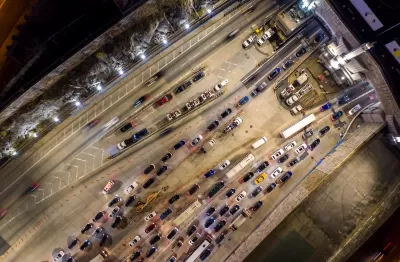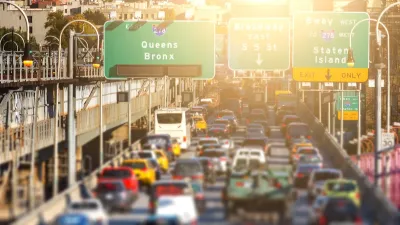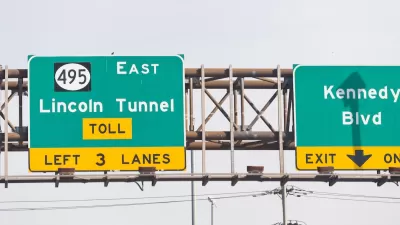New York Governor Hochul revived the dormant NYC congestion plan with a $9 toll, likely securing its implementation before the incoming Trump administration.

New York Governor Kathy Hochul will reinstate New York City’s stalled congestion pricing program with a $9 toll, a marked reduction from the $15 toll proposed earlier this year.
According to an article in The Guardian by Oliver Milman, “The revised system, to start in January, will generate $15bn to aid a major overhaul of New York’s creaking public transport system, funding repairs to a decrepit subway and bringing a fleet of new electric buses online for underserved parts of the city. Low-income drivers will get discounts, Hochul said, and the fee will also drop after 9pm to encourage late-night deliveries.”
As Milman explains, “About 700,000 vehicles enter the lower half of Manhattan each day, often at a crawl – the average travel speed is now around 7mph, down from about 9mph 15 years ago.” The program is expected to reduce congestion and pollution and encourage higher transit ridership. Notably, roughly 85 percent of commuters to Manhattan use the city’s transit system, and only half of New York City households own a car.
The program could launch as early as December 29, with other sources saying it could start in the first week of 2025 — an urgency sorely needed as President-Elect Trump has vowed to end congestion pricing once back in office.
FULL STORY: New York revives plans for congestion charging with reduced $9 toll

Study: Maui’s Plan to Convert Vacation Rentals to Long-Term Housing Could Cause Nearly $1 Billion Economic Loss
The plan would reduce visitor accommodation by 25,% resulting in 1,900 jobs lost.

North Texas Transit Leaders Tout Benefits of TOD for Growing Region
At a summit focused on transit-oriented development, policymakers discussed how North Texas’ expanded light rail system can serve as a tool for economic growth.

Why Should We Subsidize Public Transportation?
Many public transit agencies face financial stress due to rising costs, declining fare revenue, and declining subsidies. Transit advocates must provide a strong business case for increasing public transit funding.

How to Make US Trains Faster
Changes to boarding platforms and a switch to electric trains could improve U.S. passenger rail service without the added cost of high-speed rail.

Columbia’s Revitalized ‘Loop’ Is a Hub for Local Entrepreneurs
A focus on small businesses is helping a commercial corridor in Columbia, Missouri thrive.

Invasive Insect Threatens Minnesota’s Ash Forests
The Emerald Ash Borer is a rapidly spreading invasive pest threatening Minnesota’s ash trees, and homeowners are encouraged to plant diverse replacement species, avoid moving ash firewood, and monitor for signs of infestation.
Urban Design for Planners 1: Software Tools
This six-course series explores essential urban design concepts using open source software and equips planners with the tools they need to participate fully in the urban design process.
Planning for Universal Design
Learn the tools for implementing Universal Design in planning regulations.
Ascent Environmental
Borough of Carlisle
Institute for Housing and Urban Development Studies (IHS)
City of Grandview
Harvard GSD Executive Education
Toledo-Lucas County Plan Commissions
Salt Lake City
NYU Wagner Graduate School of Public Service





























